Edenham is in close proximiety to Bulby, Hawthorpe, Irnham and between Corby Glen and Bourne. As far as the 1800's Cocks/Cox and Muxlow family research has shown, this is not one of their villages. Whitney and I stopped for a few minutes to visit as we had heard there were monuments dating to the time of Shakespeare. Whitney was the photographer.
Information about St. Michael and All Angels' was provided by the Guide for Visitors located in the church.
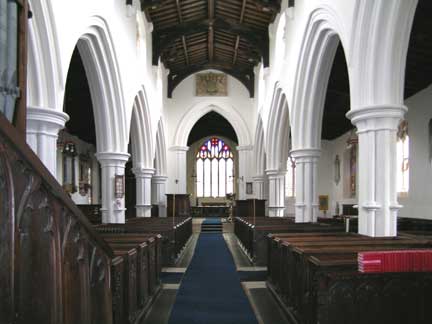
St. Michael and All Angels church dates to the 13th century. In 1808 the Chancel Arch was extended and made to match the arches on either side and the Royal Arms above it must date from this time. Originally, the Arch had been 'rounded' and was presumably Norman or even Saxon.
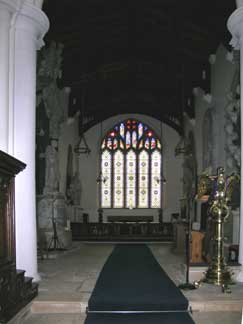
The blue carpet was used in Westminster Abbey at the
Coronation of king George VI. The late patron,
Lord Ancaster, was on the hereditary Lords
Great Chamberlain of England.
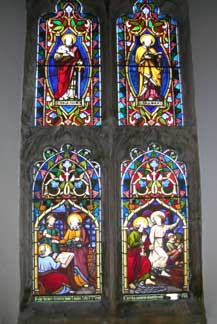
Top left: St. Paul, top right: St. Peter.
Bottom left: Theophilus and Luke,
bottom right: Peter and an angel.
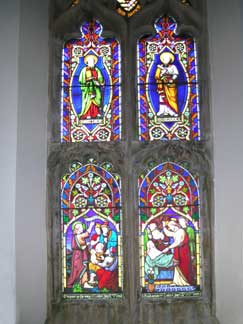
Top left: St. Matthew, top right: St. Mark
Bottom left: John the Baptist,
bottom right: the Maid restored to life.
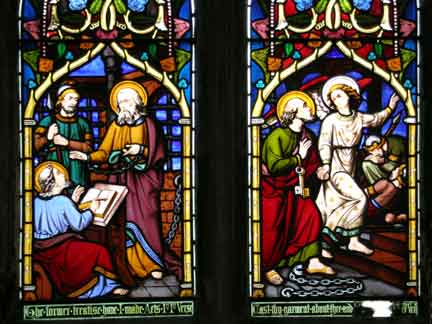
Left: "The former treatise have I made, O Theophilus, of all that Jesus began both to do and teach, until the day in which he was taken up," Acts I:I (Luke addressing Theophilus)
Right: "And the angel said unto him (Peter), Gird thyself, and bind on thy sandals. And so he did. And he saith unto him, Cast thy garment about thee, and follow me." Acts XII:8
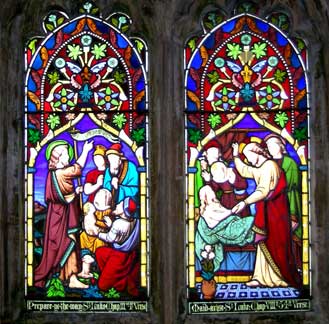
Left: "As it is written in the book of the words of Esaias the prophet, saying, The voice of one crying in the wilderness, Prepare ye the way of the Lord, make his paths straight." Luke III:4
Right: "And he put them all out (those that laughed him to scorn), and took her by the hand, and called, saying, Maid, arise." Luke VIII: 54
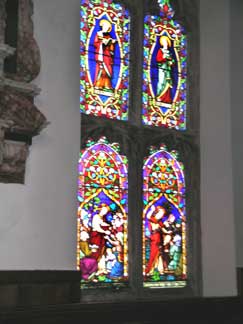
In spite of the wet weather outside, the windows were brilliant.
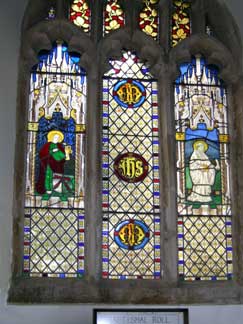
One of the oldest glass windows, left: St. James, right: St. John.
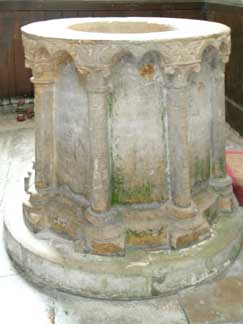
The baptismal font is Norman, late 12th century,
has unusual two lobed arches.
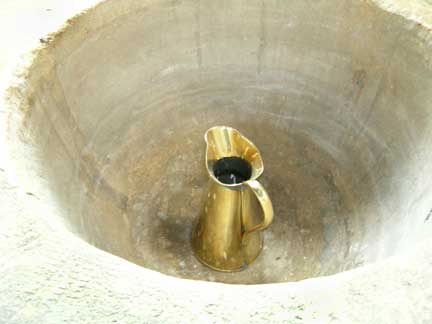
How many thousands of hands have touched this font?
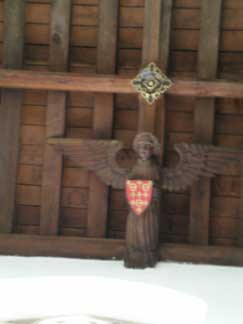
The roof dates to the 15th century, restored in the 1900's,
it is decorated with eight angels bearing shields, with
"bosses and the little green dragons at the centre."
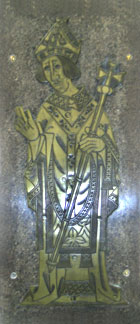
This is a copy of the original brass (about 2 ft. tall) that was high up on the outside of the Tower. It is supposedly St. Thomas of Canterbury. Henry VIII sought to stamp out the "Thomas-Cult" but somehow his agents missed the Brass where it stayed until 1910, when it was removed, repaired and properly set in Ancaster stone and now displayed in the Chancel, behind the pulpit. Local legend has it that "Henry just didn't have a long enough ladder!"
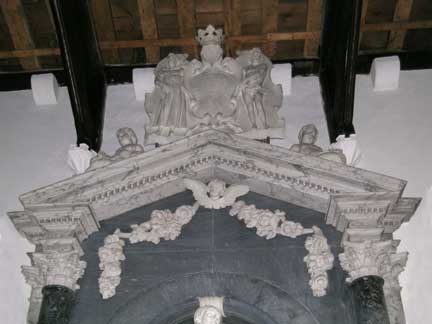
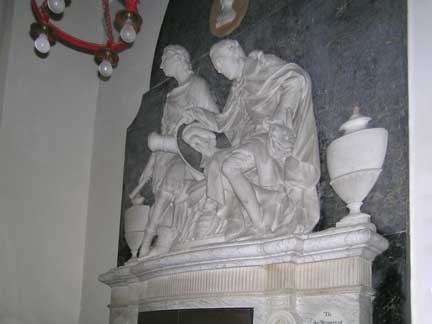
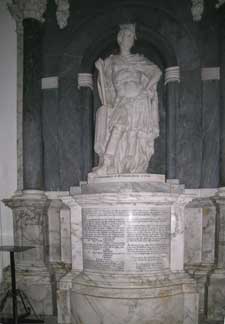
In the vault under this place lies the body of that late Most Noble Prince Robert, Baron of Ancaster and Kesteven, Marquess and Earl of Lindsey, Baron Willoughby, Beck --- Eresby, and Hereditary Lord Great Chamberlain of England...He was born 20th of October 1660 and Dyed the 26th of July 1723.
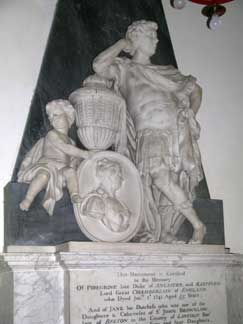
This monument erected to the memory of Peregrine, late Duke of Ancaster, and Kesteven, Lord Great Chamberlain of England, who dyed Jan. 1st 1741 aged 55 years; and of Jane, his Dutchess who was one of the Daughters & Coheireses of Sr. John Brownlow, late of Belton in the county of Lincoln
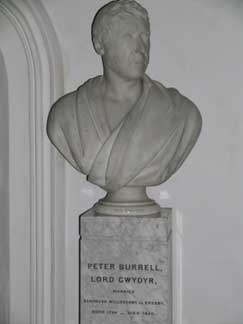
Peter Burrell, Lord Gwydyr, married Baroness Willoughby de Eresby, 1754 - 1820
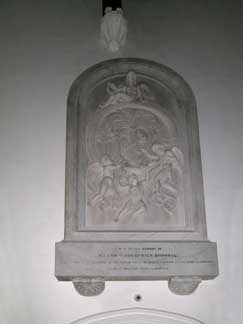
Sacred to the memory of the Hon. Frederick Burrell, eldest son of Peter Robert, 2nd Baron Gwydyr, 19th Baron Willoughby de Eresby, died 17th May 1819 aged 15 (13?) months.
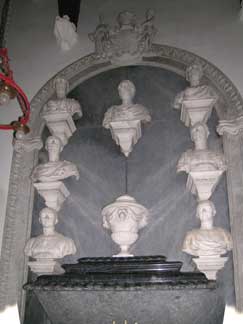
Monuments to the Bertie family.
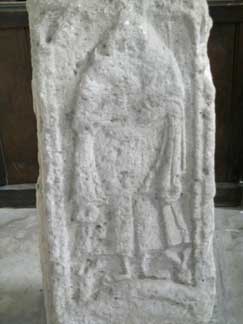
This is a 3 - ft. section of an Anglo-Saxon Cross Shaft, carved with elaborate and typical vine scroll, 8th century. It has the feet and body of a tall standing figure, possibly St. John. On the other side is carved a seated female figure, possibly a late Saxon addition.
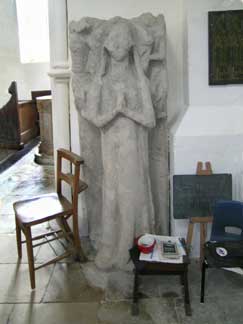
The effigy of a Lady, large angels holding her pillow,
possibly from the 13th century.